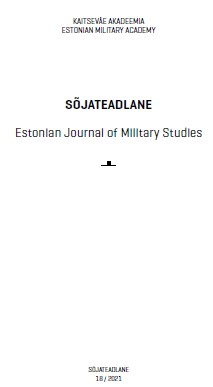KAITSEVÄE PÕHIVARA ELUTSÜKLIKULUDE ARVESTAMISE ALUSED
THE PRINCIPLES OF LIFE CYCLE COSTING OF THE ASSETS OF THE DEFENCE FORCES
Author(s): Marek MardoSubject(s): Economic policy, Security and defense, Military policy, Accounting - Business Administration
Published by: Kaitseväe Akadeemia (KVA)
Keywords: life cycle costing; life cycle cost estimation; cost breakdown structure (CBS); cost element; product tree; resources; cost of ownership (COO); total ownership cost (TOC); indirect cost; variable;
Summary/Abstract: The objective of this article is to introduce the fundamentals and basic elements of life cycle costing. Collecting historical and theoretical background information, including the development process of life cycle costing is essential in the Defence Forces because it helps to recognise the importance of assets and benefits that the organisation may gain. The concept of life cycle costing got wider attention in the mid-sixties when the US Department of Defence (DoD) acknowledged that a mere justification of lowest price tendering on governmental procurement programmes is misleading. The DoD found themselves in a situation where financial resources for maintaining the equipment were starting to run out and the funds assigned for acquiring new equipment needed to be reallocated to compensate for the deficiency. The administration of President Kennedy ordered the Logistic Management Institute to establish the methods and principles of life cycle costing. Consequently, the theory and practices of life cycle costing got transferred to major industrial countries and used as a basis for establishing national rules. Although life cycle costing is considered an interdisciplinary subject that combines the practices of management, engineering, and finance, its primary area of support is financial accounting. Why is life cycle costing essential? Defence equipment is designed for specific purposes and probably not for mass production. These systems are complex; they contain high-tech components and require constant modifications during their entire lifespan which can last for up to fifty years. Considering all that, the life cycle cost estimation process is complicated, involving elements of risk and uncertainties, and, therefore, considered a challenge for analysts. Undertaking life cycle costing helps to identify key cost drivers and provide better insight of expenses related with program planning and budgeting.
Journal: Sõjateadlane
- Issue Year: 2021
- Issue No: 18
- Page Range: 105-129
- Page Count: 25
- Language: Estonian

